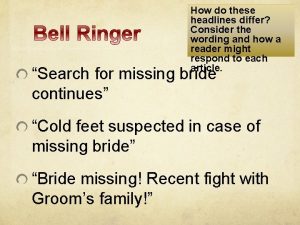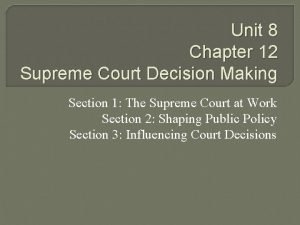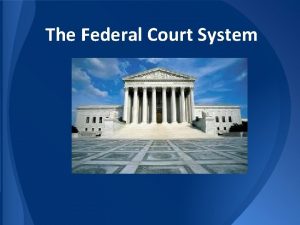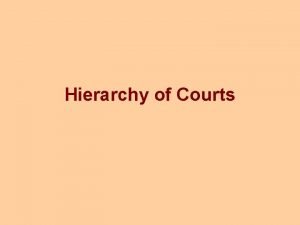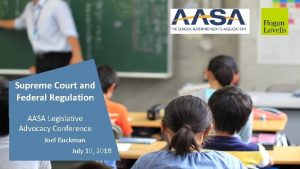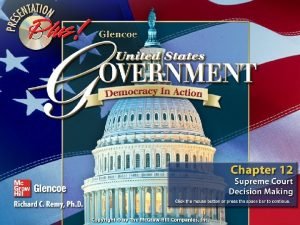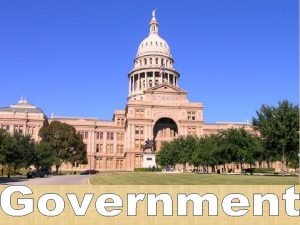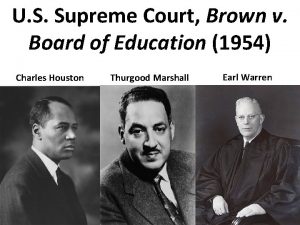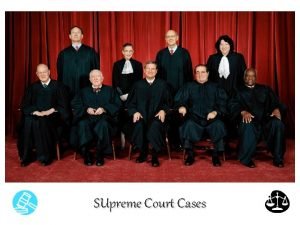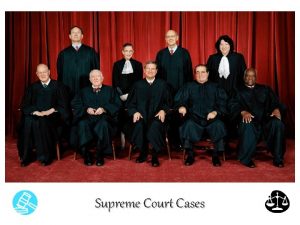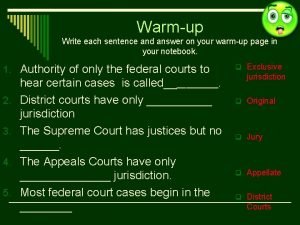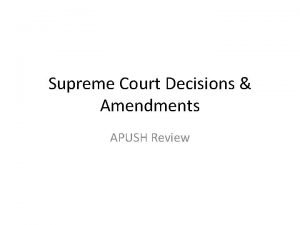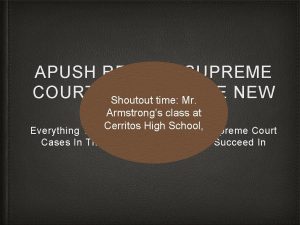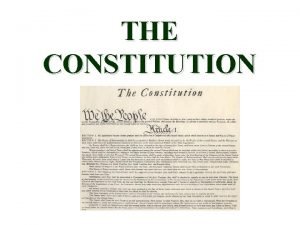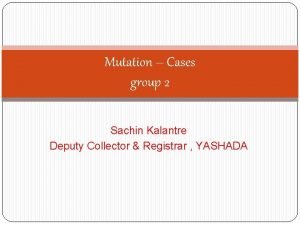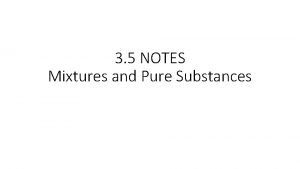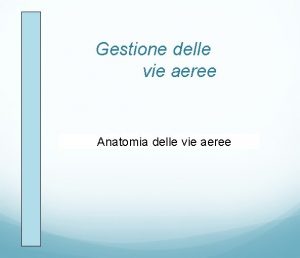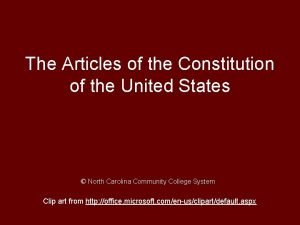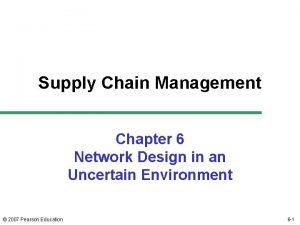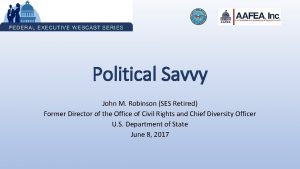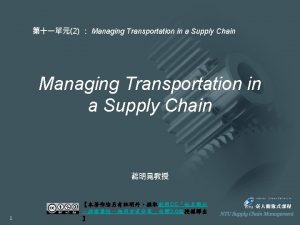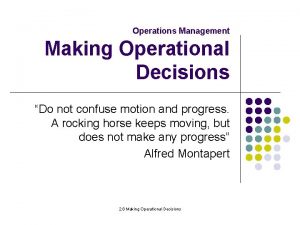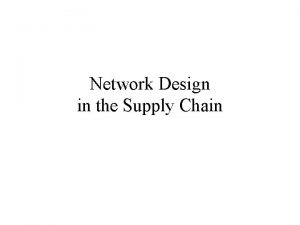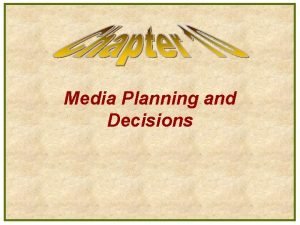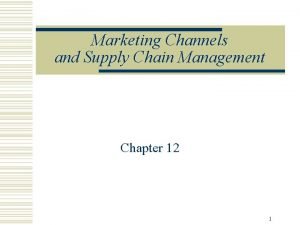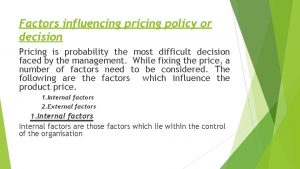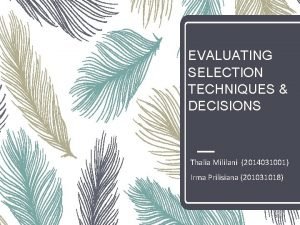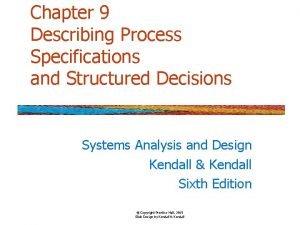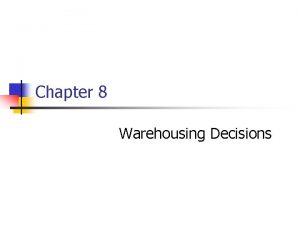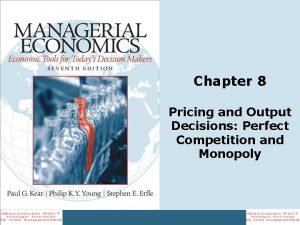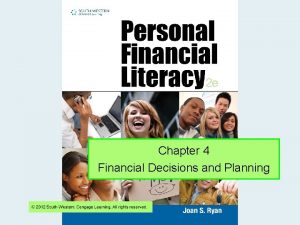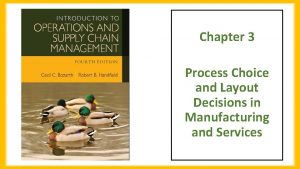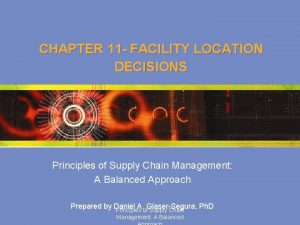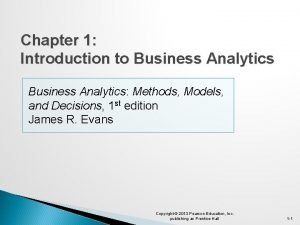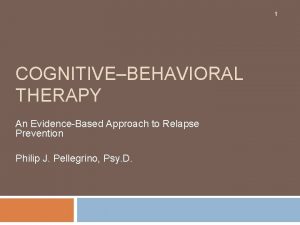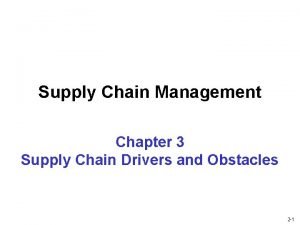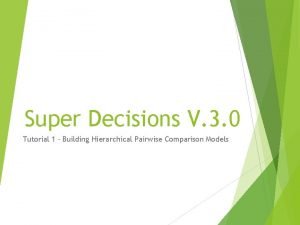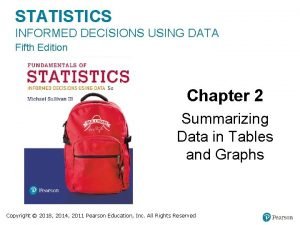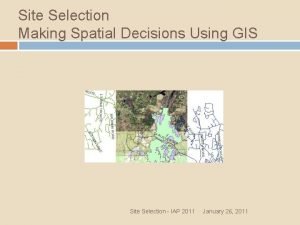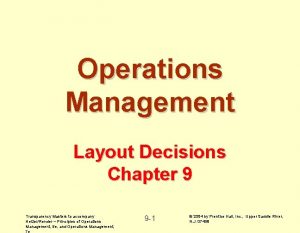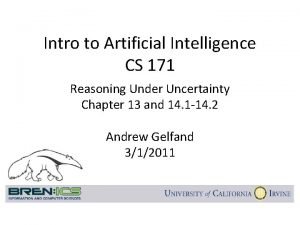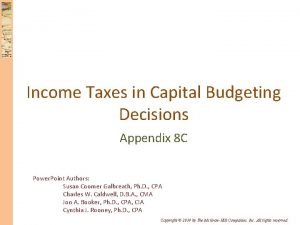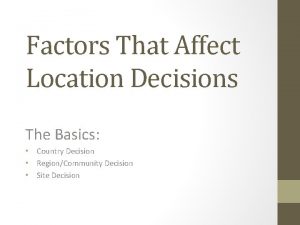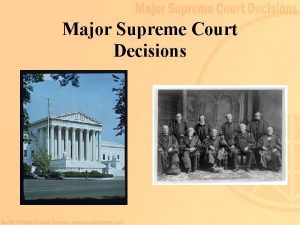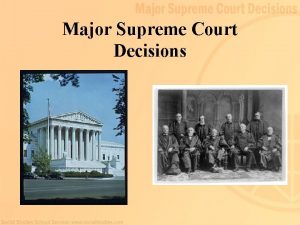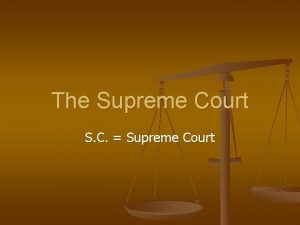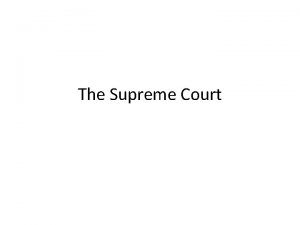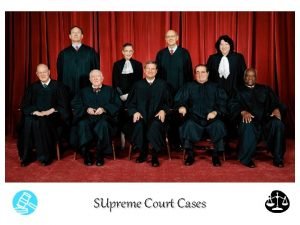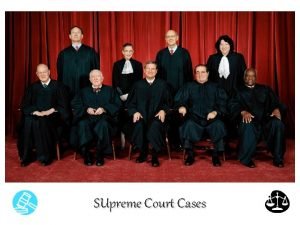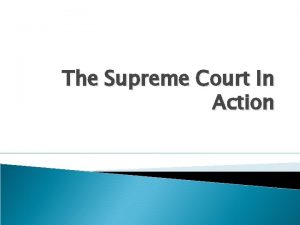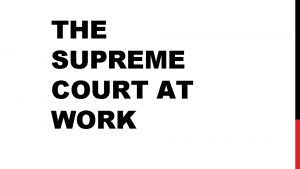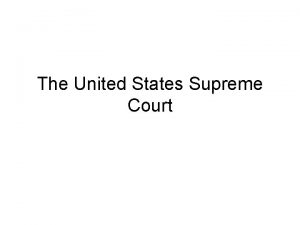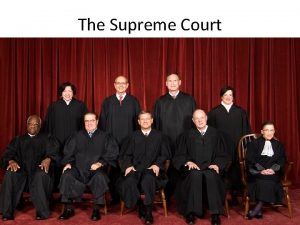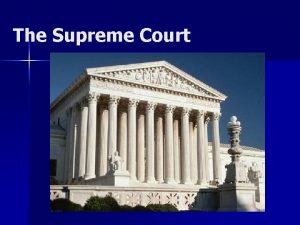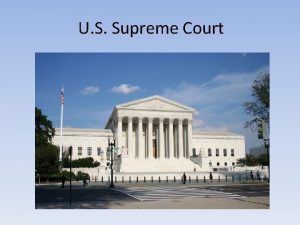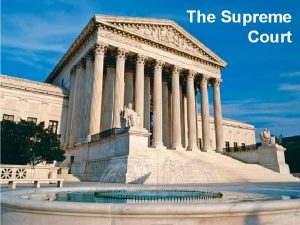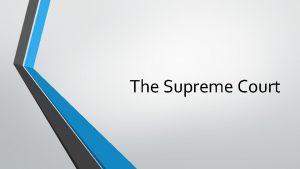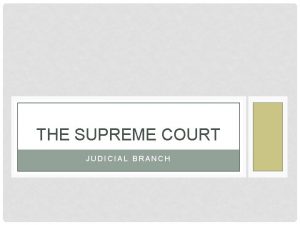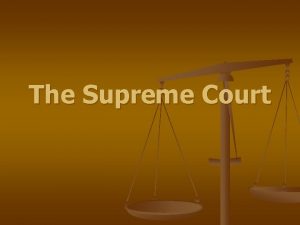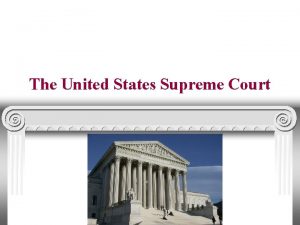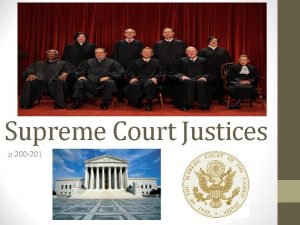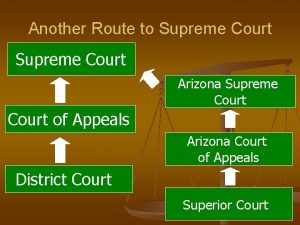1 SUMMARY OF U S SUPREME COURT DECISIONS





















































































- Slides: 85

1

SUMMARY OF U. S. SUPREME COURT DECISIONS AMERICANS WITH DISABILITIES ACT (ADA) JANUARY 2002 Prepared By: Bobby Silverstein, Director Center for the Study and Advancement of Disability Policy (CSADP) 1730 “K” Street, N. W. , Suite 1212 Washington, D. C. 20006 202. 223. 5340 (V/TTY) 202. 467. 4179 (FAX) Bobby@CSADP. org (Email) 2

Table of Cases I. III. IV. V. Pennsylvania Department of Corrections v. Yeskey (June 15, 1998) Bragdon v. Abbott (June 25, 1998) Carolyn Cleveland v. Policy Management Systems (May 24, 1999) Sutton v. United Airlines, Murphy v. United Parcel Service, Albertson’s v. Kirkinburg (June 22, 1999) Olmstead v. L. C. by Zimring (June 22, 1999) 3

Table of Cases (Continued) VI. Board of Trustees of the University of Alabama v. Garrett (February 2, 2001) VII. PGA Tour v. Martin (May 29, 2001) VIII. Buckhannon Board and Care Home, Inc. v. West Virginia Department of Health and Human Services (May 29, 2001) IX. Toyota v. Williams (January 9, 2002) X. EEOC v. Waffle House (January 15, 2002) 4

1. I. Pennsylvania Department of Corrections v. Yeskey June 15, 1998 9 -0 Decision WIN! 5

A. Issue: Whether Title II of the ADA (state and local government) covers prisons. 6

B. Holding: Plain language of statute makes Title II applicable to all state programs, projects and activities, including programs operated by prisons. 7

C. Implications: * Does not address the constitutionality of Title II * Endorses broad sweep of Title II 8

1. II. Bragdon v. Abbott June 25, 1998 5 -4 Decision WIN! 9

A. Issues: 1) Whether HIV infection is a disability under the ADA when the infection has not yet progressed to the so-called “symptomatic phase” and 2) Whether respondent’s infection posed a direct threat to the health and safety of the dentist. 10

B. Holding: 1) Respondent’s infection was a disability. 2)The existence or nonexistence of a direct threat to the health and safety of the dentist must be based on medical or other objective evidence. 11

C. Implications: 1) Deference to express congressional intent 2) Great deference to interpretation by administrative agencies 12

Implications (Continued) 3) In determining direct threat to the health of the dentist, the views of public health authorities are given special weight and authority 4) Recognition of the core purposes and policies of ADA 13

1. III. Carolyn Cleveland v. Policy Management Systems May 24, 1999 9 -0 Decision WIN! 14

A. Issue: Whether the ADA erects a special presumption that would significantly inhibit an SSDI recipient from simultaneously pursuing an action for disability discrimination under the ADA claiming that with an accommodation she could perform the essential functions of the job. 15

B. Holding: SSDI and ADA have different purposes, policies, and definitions of key terms. No special presumption inhibiting an SSDI recipient from simultaneously pursuing an ADA claim. However, individual cannot talk out of both sides of his/her mouth when presenting facts. 16

C. Implications: 1) Decision reflects keen understanding of the complementary nature of various components of the disability policy framework (independence, economic self-sufficiency, and equality of opportunity). 17

Implications (Continued) 2) Deference to agency interpretations. 3) Common sense approach based on understanding of two laws. 18

1. IV. Sutton v. United Airlines, Murphy v. United Parcel Service Albertsons v. Kirkingburg June 22. 1999 Sutton 7 -2 Decision Murphy 7 -2 Decision Albertson’s 9 -0 Decision LOSS 19

A. Issue: Whether disability is determined with or without reference to corrective measures. 20

B. Holding: Disability is determined with reference to corrective measures. 21

C. Implications: 1) Significantly limits scope of the protected class. 2) Ignored explicit legislative history. 22

Implications (Continued) 3) Rejected explicit administrative interpretation. 4) Persons with disabilities now required to make full blown, expensive presentation of facts just to get into the courthouse door. 23

Implications (Continued) 5) Significant implications on scope of coverage (who is protected) for persons with diabetes, epilepsy, mental illness, ADHD, learning disabilities. 24

1. V. Olmstead v. L. C. by Zimring June 22, 1999 6 -3 Decision WIN! 25

A. Issue: Whether the proscription against discrimination on the basis of disability requires placement of persons with disabilities in community settings rather than in institutions under specified circumstances. 26

B. Holding: A Qualified Yes. Such an action is required when: 1) The state’s treatment professionals have determined that community placement is appropriate. 2) The affected individual does not oppose the transfer from institutional care to a less restrictive setting. 27

3) The placement can be reasonably accommodated, taking into account the resources available to the state and the needs of others with disabilities. 4) Appropriate relief must take into consideration the range of facilities the state maintains and its obligation to administer services with an even hand. (Development of a comprehensive effectively working plan). 28

C. Implications: 1) Deference to administrative interpretation and legislative history. 2) Unjustified segregation as a key component of disability discrimination is affirmed. 29

Implications (Continued) 3) Describes Medicaid as a funding source to help pay for ADA Integration requirement. 4) Role of stakeholders in the development of comprehensive effectively working plan. (Acceptable explanations and unacceptable excuses). 30

Implications (Continued) 5) Actions by HHS (OCR and HCFA) to support state efforts. 31

1. VI. Board of Trustees of the University of Alabama v. Garrett February 2, 2001 5 -4 Decision LOSS 32

A. Issue: Whether employees of the State may recover money damages by reason of the State's failure to comply with the provisions of Title I of the ADA (employment discrimination)? 33

B. Holding: An employee with a disability may not recover money damages by reason of a State's failure to comply with Title I of the ADA. Congress does not have the constitutional authority under the equal protection clause of the 14 th Amendment to abrogate a State's sovereign immunity (protection against suit by individuals), under the 11 th Amendment in cases alleging employment discrimination against a state agency. 34

Such an abrogation is required to enable an individual to sue for money damages against a state. 35

C. Implications for Employees: 1) The decision does not negate the standards of employment discrimination set out in Title I of the ADA e. g. , discrimination includes the failure to provide reasonable accommodations. 2) These standards can be enforced against a state by the United States in actions for money damages. 36

Implications for Employees (Continued) 3) State employees can still seek injunctive relief. 4) State employees may still seek redress under state laws. 37

Implications for Employees (Continued) 5) Employees hired by local governments are not affected in any way by the decision, i. e. , they can still secure money damages under Title I of the ADA. 38

D. Other Implications: 1) The decision is the most recent case in a line of cases severely restricting the ability of Congress to determine the circumstances under which it is appropriate to enact legislation implementing the equal protection clause of the 14 th Amendment protecting specified categories of persons from discrimination. 39

Other Implications (Continued) 2) The case only decides the constitutionality of Title I of the ADA; it does not decide the constitutionality of Title II of the ADA (programs, projects, and activities engaged in by state and local governments). Thus, for example, nothing in the Garrett decision affects development of an 40

Other Implications (Continued) Olmstead plan i. e. , a comprehensive effectively working plan for placing qualified persons with disabilities in the most integrated setting appropriate. 41

Other Implications (Continued) 3) Five Justices (The Majority) rejected as insufficient the history of a pattern of unconstitutional employment discrimination by the States found by Congress and President Bush. However, the history documenting a pattern of unconstitutional discrimination by states 42

Other Implications (Continued) with respect to the operation of its programs, services, and activities may be sufficiently compelling to result in a different decision for Title II of the ADA. 43

Other Implications (Continued) 4) If the Supreme Court eventually rules that Congress lacked sufficient authority under the equal protection clause of the 14 th Amendment to abrogate a state's sovereign immunity, the worst case scenario under current constitutional doctrine would be that an individual would no longer be permitted to seek money 44

Other Implications (Continued) damages against states; individuals could still seek injunctive relief of the type obtained in the Olmstead decision. 45

1. VII. PGA Tour, Inc. v. Martin May 29, 2001 7 -2 Decision WIN! 46

A. Issue: 1) Whether the ADA protects access to professional golf tournaments by a qualified entrant with a disability and 2) Whether a disabled contestant may be denied the use of a golf cart because it would "fundamentally alter t the nature" of the tournaments to allow him to ride when all other contestants must walk. 47

B. Holding: 1) The ADA protects access to professional golf tournaments by a qualified entrant with a disability. PGA's tournaments simultaneously offer at least two "privileges" to the public--that of watching the golf competition and that of competing in it. 48

2) The walking rule should have been granted. Based on an individualized determination of the facts applicable to Martin, a modification to the walking rule allowing the use of a cart is reasonable and necessary and will not impair the purpose of the walking rule. 49

Thus, it cannot be said that permitting Martin to use a cart will "fundamentally alter" the tournament. Further, the individualized inquiry will not result in an undue administrative burden on the PGA. 50

C. Implications: * In considering whether or not to modify a rule of general applicability, the covered entity must make an individualized inquiry regarding the applicable facts. 51

Implications (Continued) * The covered entity must determine whether the modification is necessary for the individual. 52

Implications (Continued) * The inquiry must also determine whether the modification is reasonable. This entails a review of the purpose or function of the rule. The critical question is whether the modification to the rule will compromise the purpose of the rule. A modification is reasonable if it does not result in a fundamental alteration to the purpose of the rule. 53

Implications (Continued) * Finally, the inquiry must determine whether the individualized determination by the covered entity relating to whether the modification is necessary and reasonable is overly burdensome i. e. , will the determination result in undue administrative burden on the covered entity. 54

1. VIII. Buckhannon Board and Care Home, Inc. v. West Virginia Department of Health and Human Services May 29, 2001 5 -4 Decision LOSS 55

A. Issue: Under the ADA and the Fair Housing Act, the prevailing party may secure attorney's fees. The issue before the Court was whether the term "prevailing party" under the ADA and Fair Housing Act includes a plaintiff that has failed to secure a judgment on the merits from a judge or a court-ordered consent decree, but has nonetheless 56

achieved the desired result because the lawsuit brought about a voluntary change in the defendant's conduct (catalyst theory). 57

B. Holding: The catalyst theory is not a permissible basis for the award of attorney's fees under the ADA and the Fair Housing Act. 58

C. Implications: 1) The 5 -4 Majority concludes that the phrase "prevailing party" is a "term of art" which has a clear meaning. The clear meaning is that in order to be eligible for attorney's fees a judge must be involved in granting the relief requested by the plaintiff. 59

2) The Majority rejects the catalyst theory under which a prevailing party must meet a 3 -prong test: whether the claim was legitimate rather than groundless; whether the lawsuit was a substantial rather than insubstantial cause of the defendant's change in conduct; and whether the defendant's change in conduct was motivated by the plaintiff's threat of victory rather than threat of expense. 60

3) The Minority pointed out that every circuit court (with one exception) had embraced the catalyst theory. In a nutshell, these courts embraced the catalyst theory because they believed that the ultimate purpose of a lawsuit is to achieve actual relief from the defendant-a judicial decree is not the end but one means of securing such relief. Out-ofcourt settlements or other post complaint change in conduct should also suffice. 61

4) The Minority also pointed out that the decision would likely discourage out of-court settlements and make it more difficult for persons with limited resources to seek redress of their grievances. 62

IX. Toyota v. Williams January 8, 2002 9 -0 Decision LOSS 63

A. Background. Under the ADA, an individual is a member of the "protected class" i. e. , can file a complaint under the ADA if he/she is an “individual with a disability. ” The ADA includes 3 prongs for determining whether an individual is considered "an individual with a disability. “ Under the first prong, and individual is considered an individual with a disability if he/she 64

has a physical or mental impairment which substantially limits a major life activity. The individual who filed this case has carpal tunnel syndrome and related impairments. She claimed, among other things, that she had a substantial limitation of the major life activity of performing manual tasks. 65

B. Issue: What is the proper standard for assessing whether an individual is substantially limited in performing the major life activity of "performing manual tasks? " 66

C. Holding: To be substantially limited in the major life activity of performing manual tasks, an individual must have an impairment that prevents or severely restricts the individual from doing activities that are of central importance to most people's daily lives. The impairment's impact must also be permanent or long-term. 67

D. Implications: 1) The Court concluded that the performances of manual tasks unique to any particular job are not necessarily important parts of most people's lives. Therefore, courts may not consider an individual's inability to do manual work in a specialized assembly line job as sufficient proof that the individual is 68

D. Implications: (Continued) substantially limited in performing manual tasks. Further, household chores, bathing, and brushing one's teeth are among the types of manual tasks of central importance to a person's daily life and should have been part of the assessment of whether the individual was substantially limited in performing manual tasks. 69

D. Implications: (Continued) 2) The unanimous Supreme Court appeared reluctant to cover the individual for fear of expanding the protected class. The Court concluded that the components of the definition of disability need to be interpreted "strictly" to create a demanding standard for qualifying as disabled. The Court cited 70

D. Implications: (Continued) to the 43, 000 persons with disabilities identified in the findings section of the ADA in support of its strict interpretation. A consequence of the Court’s decision will be to impede the realization of one of ADA’s four goals – fostering economic self-sufficiency for person’s with physical or mental impairments. 71

D. Implications: (Continued) 3) The Court concluded that it is insufficient for individuals attempting to prove disability status to merely submit evidence of a medical diagnosis of an impairment. The Court concluded that the existence of a disability must be determined on a case-by-case basis. 72

D. Implications: (Continued) 4) The Court interpreted the phrase "substantially limits" to include impairments that "prevent or severely restrict" the individual from doing a particular major life activity. The EEOC’s definition is “unable to perform a major life activity that the average person in the general population can 73

D. Implications: (Continued) perform" or "significantly restricted as to the condition" compared to the average person in the general population. The Court's interpretation appears to create a very strict standard. 74

D. Implications: (Continued) 5) The Court expressed no opinion on whether a major life activity includes "working. " It did note, however, that "because of the conceptual difficulties inherent in the argument that working could be a major life activity, we have been hesitant to hold as such, and we need not decide this difficult question today. " 75

D. Implications: (Continued) 6) The Court reiterated the position taken in Sutton that no agency has been given authority to issue regulations interpreting the term "disability" under the ADA. The Court stated that it has no occasion to decide what level of deference, if any, is due to the EEOC definition of disability. 76

X. EEOC v. Waffle House, Inc. January 15, 2002 6 -3 Decision WIN! 77

A. Background. Under the ADA, the Equal Employment Opportunity Commission (EEOC) exercises the same enforcement powers, remedies, and procedures set out in Title VII of the Civil Rights Act. In accordance with amendments to Title VII made in 1991, EEOC has authority to bring suit to enjoin 78

A. Background. (Continued) an employer from engaging in unlawful employment practices and to pursue reinstatement, back pay, and compensatory or punitive damages. In 1925 Congress enacted the Federal Arbitration Act (which was reenacted in 1947) to place arbitration agreements between consenting parties on the same footing as other contracts. 79

B. Issue: Whether a private arbitration agreement between an individual and that individual's employer to arbitrate employment-related disputes prevents the EEOC from filing a court action in its own name recovering victimspecific judicial relief e. g. , monetary damages for the individual in an enforcement action under Title I of the ADA? 80

C. Holding: Under the ADA, a private arbitration agreement between an individual and that individual's employer does not prevent the EEOC from filing a court action in its own name seeking the recovery of, among other things, victim-specific judicial relief e. g. , monetary damages for the individual. 81

D. Implications: 1) The decision embraces the view that EEOC is not constrained in any way by a private arbitration agreement to which it is not a party. 82

D. Implications: (Continued) 2) The Court recognized that the EEOC is authorized to bring suit in its own name and that it has the prerogative, as a federal enforcement agency, to decide what relief is appropriately sought in a particular action. The agency may be seeking to 83

D. Implications: (Continued) "vindicate the public interest" even when it pursues entirely victim-specific relief. 84

D. Implications: (Continued) 3) The Court rejected the argument that the EEOC is merely a proxy for the individual for whom it seeks relief i. e. , EEOC is the "master of its own case" even though the individual may be required to pursue his or her own claim in arbitration. 85
 Is there a basketball court above the supreme court
Is there a basketball court above the supreme court Image making meaning
Image making meaning What do these headlines say about how the supreme court
What do these headlines say about how the supreme court Vocabulary activity 12 supreme court decision making
Vocabulary activity 12 supreme court decision making Us circuit court map
Us circuit court map Political parties
Political parties Hierarchy of criminal courts in india
Hierarchy of criminal courts in india The u.s. supreme court works chiefly as a(n)
The u.s. supreme court works chiefly as a(n) Supreme court does
Supreme court does Supreme court does
Supreme court does Have supreme court
Have supreme court The supreme court
The supreme court Supreme court
Supreme court Supreme court
Supreme court Insular cases apush
Insular cases apush Supreme court cases graphic organizer answers
Supreme court cases graphic organizer answers Which of these best summarizes the monroe doctrine?
Which of these best summarizes the monroe doctrine? John marshall supreme court
John marshall supreme court John marshall supreme court
John marshall supreme court How cases reach the supreme court worksheet answers
How cases reach the supreme court worksheet answers Apush supreme court cases
Apush supreme court cases Apush supreme court cases
Apush supreme court cases Screening decisions and preference decisions
Screening decisions and preference decisions Supreme ordeal in the odyssey
Supreme ordeal in the odyssey Supreme law of the land clipart
Supreme law of the land clipart Recueil de chant jeunesse adventiste pdf
Recueil de chant jeunesse adventiste pdf Yashada supreme
Yashada supreme Supreme marketing mix
Supreme marketing mix Constitution supreme law of the land
Constitution supreme law of the land Lorsque le ciel retentit de louanges
Lorsque le ciel retentit de louanges Supreme power solutions
Supreme power solutions Is supreme pizza homogeneous or heterogeneous
Is supreme pizza homogeneous or heterogeneous Artistry supreme lx
Artistry supreme lx Scala di cormack e lehane
Scala di cormack e lehane Supreme law of the land clipart
Supreme law of the land clipart Supreme knowledge foundation
Supreme knowledge foundation Quelle est cette montagne
Quelle est cette montagne Supreme ordeal definition
Supreme ordeal definition Supreme x terry richardson
Supreme x terry richardson International product decisions
International product decisions Business strategy game year 12 decisions
Business strategy game year 12 decisions Supply chain network design decisions
Supply chain network design decisions Product line decisions
Product line decisions Technical decisions in project charter
Technical decisions in project charter Product line decisions
Product line decisions 12 principles of logistics
12 principles of logistics People with political savvy make decisions that
People with political savvy make decisions that Pharmasim decisions
Pharmasim decisions Distribution decisions in marketing
Distribution decisions in marketing Part 6 you make the decision - distribution decisions
Part 6 you make the decision - distribution decisions Factors affecting transportation decisions
Factors affecting transportation decisions Operational decisions: bump up your bumper
Operational decisions: bump up your bumper Supply chain network design decisions
Supply chain network design decisions Message decisions
Message decisions Media decisions
Media decisions Channel objectives and constraints
Channel objectives and constraints Factors influencing international pricing
Factors influencing international pricing The role of network design in the supply chain
The role of network design in the supply chain Evaluating selection techniques and decisions
Evaluating selection techniques and decisions Channel designs
Channel designs Process specifications
Process specifications Basic warehousing decisions
Basic warehousing decisions Pricing and output decisions in perfect competition
Pricing and output decisions in perfect competition Chapter 7 buying decisions
Chapter 7 buying decisions Chapter 7 buying decisions
Chapter 7 buying decisions Chapter 4 financial decisions and planning
Chapter 4 financial decisions and planning Chapter 4 financial decisions and planning
Chapter 4 financial decisions and planning Layout decisions
Layout decisions Branding and packaging decisions
Branding and packaging decisions Location
Location Business analytics methods models and decisions
Business analytics methods models and decisions Marketing channel design
Marketing channel design Seemingly unimportant decisions examples
Seemingly unimportant decisions examples Components of facilities decisions
Components of facilities decisions Super decisions software
Super decisions software Statistics informed decisions using data 5th edition pdf
Statistics informed decisions using data 5th edition pdf Benefits of effective sourcing decisions
Benefits of effective sourcing decisions Making spatial decisions using gis
Making spatial decisions using gis Bcom marketing management
Bcom marketing management Layout decisions operations management
Layout decisions operations management Product line decisions
Product line decisions Retail marketing decisions
Retail marketing decisions Strategic decisions
Strategic decisions Optimal decisions in games in artificial intelligence
Optimal decisions in games in artificial intelligence Tax shield
Tax shield Factors that affect location decisions
Factors that affect location decisions


